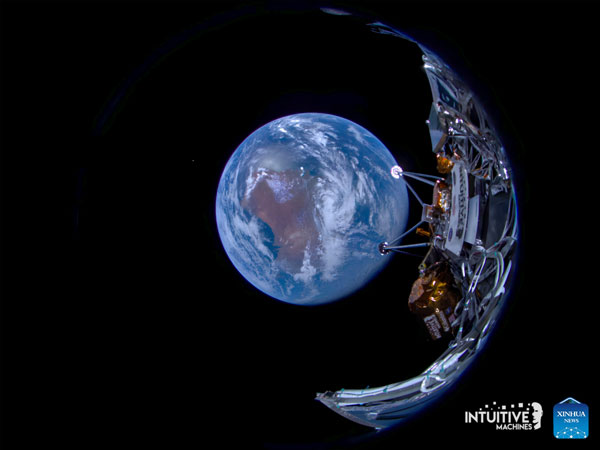
LOS ANGELES | Xinhua | U.S. company Intuitive Machines’ first lunar lander touched down on the Moon Thursday, marking the first American spacecraft to land on the lunar surface in more than 50 years.
The uncrewed lander, named Odysseus, landed at the lunar South Pole at 6:23 p.m. Eastern Time, according to NASA.
After troubleshooting communications, flight controllers have confirmed Odysseus is upright and starting to send data, according to Intuitive Machines.
“Right now, we are working to downlink the first images from the lunar surface,” the company said on social media.
Odysseus carries NASA science and other commercial payloads to the moon. “These instruments will prepare us for future human exploration of the Moon under Artemis,” NASA noted.
“Today, for the first time in half a century, America has returned to the Moon,” NASA Administrator Bill Nelson wrote on X, formerly Twitter.
On the eighth day of a quarter-million-mile voyage, Intuitive Machines aced the landing of a lifetime, he added.
After touching down on the Moon, the lander will begin drilling operations, according to NASA.
Odysseus launched on a SpaceX Falcon 9 rocket last Thursday from NASA’s Kennedy Space Center in Florida. The mission, codenamed IM-1, marks Intuitive Machines’ first robotic flight to the moon’s surface.
The Lander is a tall hexagonal cylinder with six landing legs. It is capable of carrying 100 to 130 kg of payload to the surface, according to NASA.
It uses solar panels to generate 200 watts of power on the surface. Propulsion and landing use liquid methane as fuel and liquid oxygen as an oxidizer.
The scientific objectives of the mission include studies of plume-surface interactions, radio astronomy, and space weather interactions with the lunar surface. It will also demonstrate precision landing technologies and communication and navigation node capabilities, according to NASA.
NASA is working with several U.S. companies to deliver science and technology to the lunar surface through the Commercial Lunar Payload Services initiative.
The last U.S. moon landing mission was made in December 1972, when Apollo 17 touched down on the lunar surface for the final mission of the Apollo Program.
In January this year, another private American company, Astrobotic Technology, sent a spacecraft to the Moon, attempting to achieve the first U.S. lunar landing in more than 50 years. But the lander, dubbed Peregrine, suffered propulsion issues after launch, and ultimately failed to land on the Moon. ■
 The Independent Uganda: You get the Truth we Pay the Price
The Independent Uganda: You get the Truth we Pay the Price


